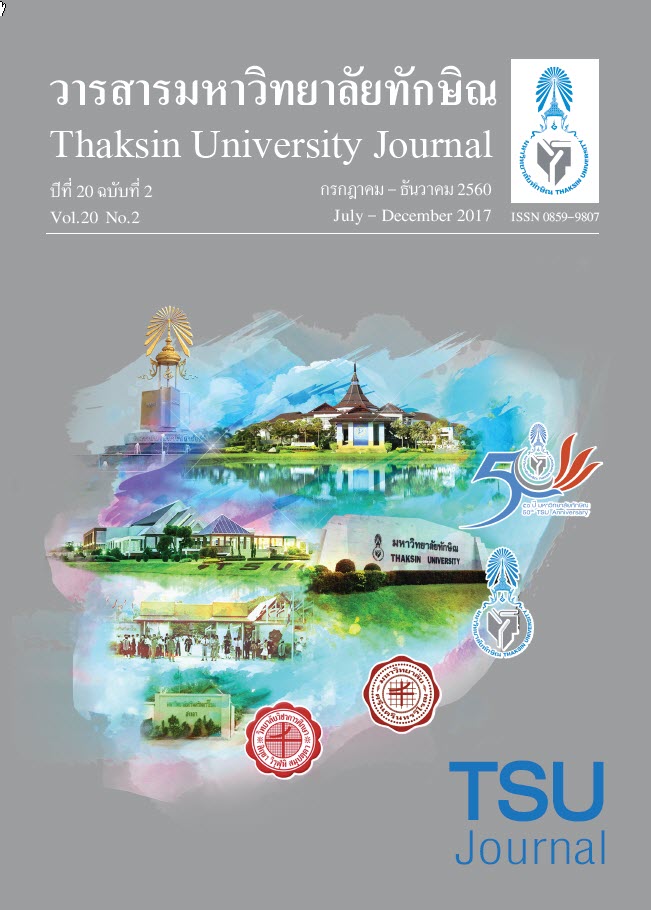Mechanical Properties of Porous Concrete with Effective Micro-organisms (EM) Mixed
Main Article Content
Abstract
This research to aims to study the compressive strength of porous concrete using Effective
Micro-organisms (EM) mixed in place of water at the proportion of 0, 5, 10 and 15% respectively at the blending period of 7, 28 and 56 days. The findings are as follow: Using EM in place of water at 10% by weight at the blending period 7, 28 and 56 days the compressive strength will be at 66.30, 67.75 and 150.87 kg/cm2, respectively. This ratio is appropriate to develope properties of compressive strength with allotted time. Development of the compressive strength of porous concrete using EM mixed features was better pozzolanic reaction as the excessive element, Ca(OH)2 from hydration which has SiO2 and Al2O3 will blend with EM, as the main elements, and generates calcium silicate hydrate (CSH) and calcium aluminate hydrate (CAH), which are effective joining substances between masses, thus increasing the compressive strength in porous concrete because EM has qualification to kill inorganic substances in porous concrete. By that way, the porous concrete will have more compressive strength. On the contrary, if EM has replaced water at a higher ratio or more than the accepted ASTM C94 standards, this decrease will compressive strength for porous concrete.
Article Details
References
Concrete Containing Palm oil Fuel Ash and Rice Husk-bark Ash”, Construction and Building
Materials. 21, 1492-1499
[2] Park, J.-Y. and Kim, S.-H., (2010). “A New Species of Torrent Catfish from Korea”, Korean Journal of
Limnology. 21, 345-352.
[3] Wang, S., J. et., al. (2003). “Dielectric Properties of Fruits and Insect Pests as Related to Radio Frequency
and Microwave Treatments”, Biosystems Engineering. 85, 201-212.
[4] K.A. and G.I. Matsumoto (2004). “Stellamedusa Ventana, a New Mesopelagic Scyphomedusa from the
Eastern Paci¢c Representing a New Subfamily, the Stellamedusinae”, Journal of the Marine Biological.
84, 37-42.
[5] Rattanasak U. and Chindaprasirt P. (2009). “Influence of NaOH Solution on the Synthesis of Fly Ash
Geopolymer”, Minerals Engineering. 22, 1073-1078.
[6] Kevern, J. T. et., al. (2008). “Pervious Concrete Mixture Proportions for Improved Freeze-Thaw Durability”,
Journal of ASTM International. 2, 1-12.

